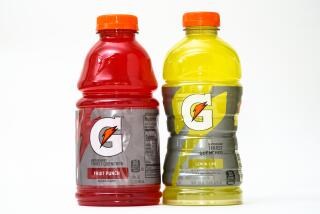Mars candy bars downsizing -- but will you eat less?
On Tuesday, Mars Inc. reiterated a promise to “renovate” its chocolate products — which include M&Ms, Snickers, and Dove Bars — so that no portion will exceed 250 calories by the end of 2013.
In some cases, this means chocolate bars will get smaller. In others, it means packaging will change: hefty King Size portions will be subdivided into smaller “2toGo” subportions, designed to make it easier to put one serving aside for later.
In theory, anyway.
Whether smaller packages really do translate to fewer calories consumed has been a matter of debate. In one study from researchers at the University of Colorado in Denver, participants offered 100-calorie snack packs for a week consumed fewer grams of food than participants offered standard-sized packs — and continued to do so once bigger packages were re-introduced, suggesting that eating from smaller packages increased awareness of portion size. (Personally, I’ve had pretty good luck sticking to just one of these Trader Joe’s chocolate bars at a time.) But this analysis from Supermarket News shows that though consumers frequently say they like portion-controlled products, they still often overeat.
The Los Angeles Times has weighed in often on portion control in recent years. In 2008 and in 2011, writers Karen Ravn and Jeannine Stein reported on portion control plates, designed to help diners serve up the right amount of food. Last year, Stein also blogged about a study that found that cutting food into smaller pieces limited consumption. And this study, which I reported about in December 2010, suggested that merely imagining eating an M&M could make you crave it less.
Check out the links to the left for more on portion control.
More to Read
Inside the business of entertainment
The Wide Shot brings you news, analysis and insights on everything from streaming wars to production — and what it all means for the future.
You may occasionally receive promotional content from the Los Angeles Times.











